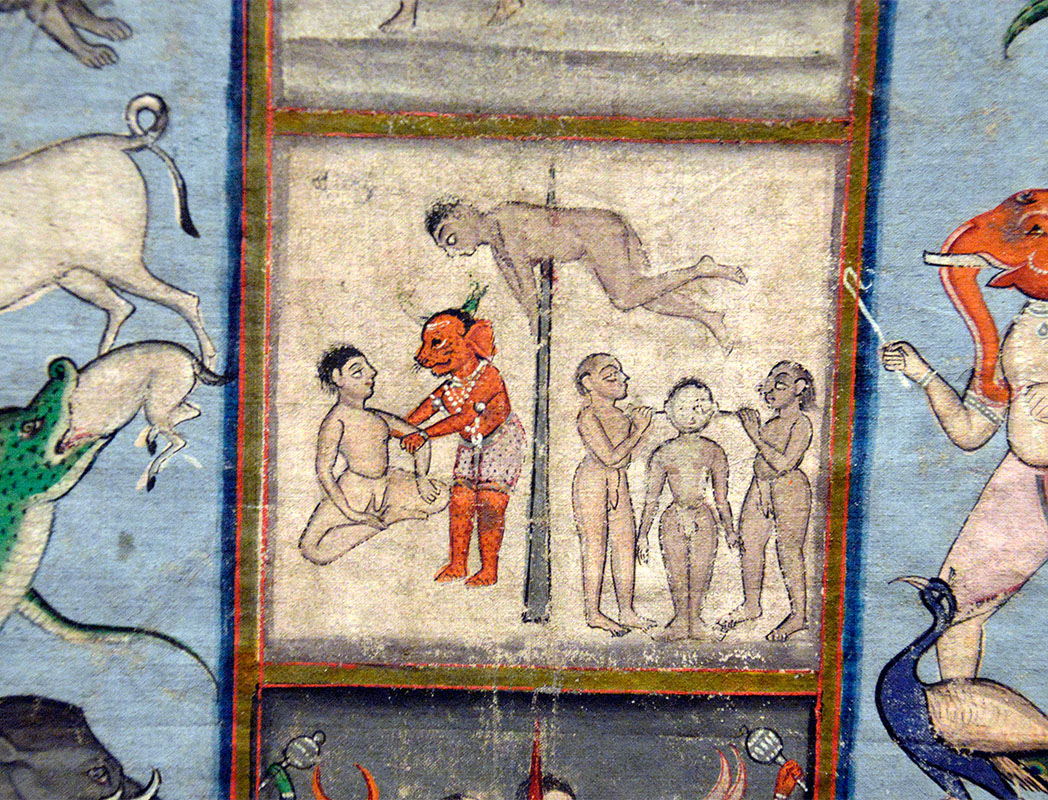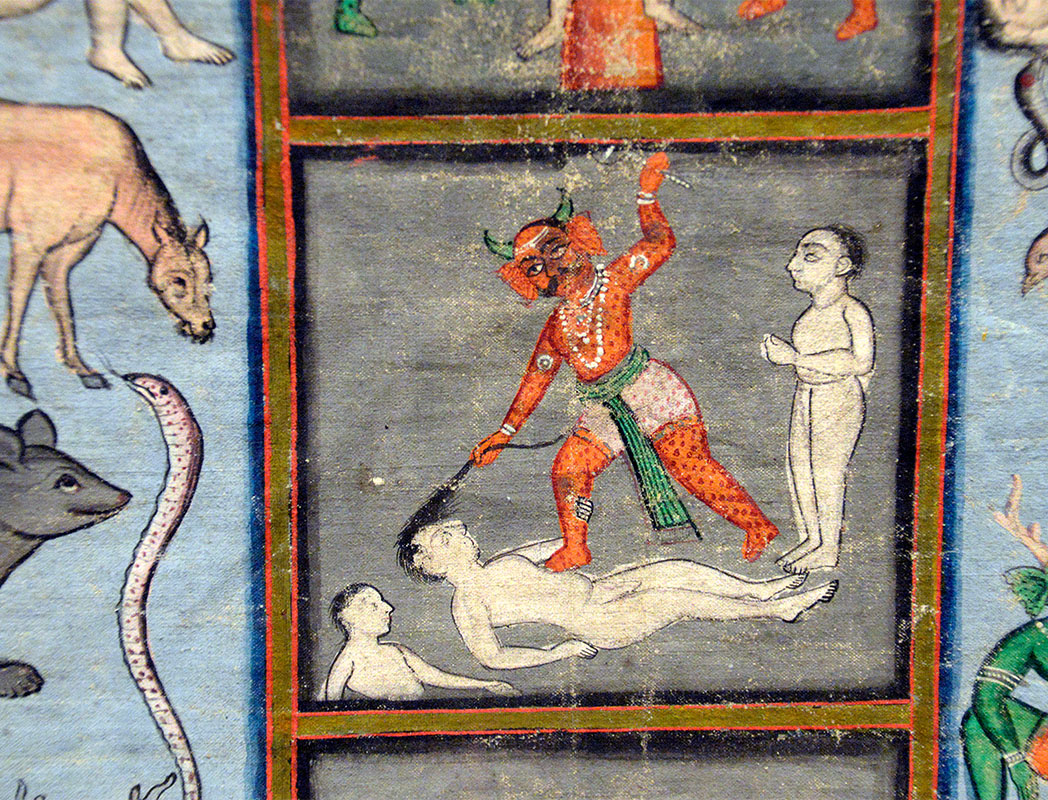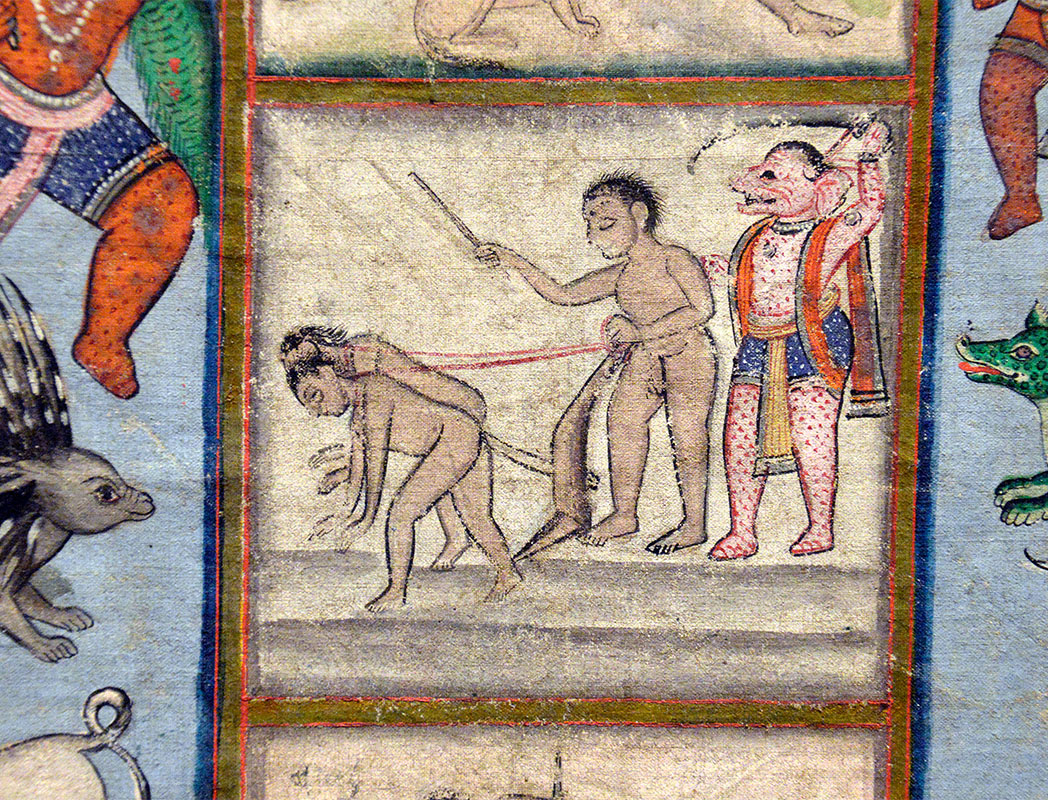PERSPECTIVES
Karma, Rebirth and Naraka According to Jain Cosmology
If you have behaved violently and been jealous, possessive or hurtful, your soul may be reborn in naraka (hell), according to Jain cosmology. Naraka is an elaborate seven-level realm of suffering and pain, where one might remain for millions of years until you experience the full repercussions of your accrued karma. Therefore, Jain cosmology is elaborately structured, with a degree of layered symmetry and repetition.
In Jainism, a person who has engaged in violence will be reborn in hell, where greater acts of violence lead them to be re-incarnated in a lower realm of naraka, where the suffering is greater. If one behaves well during their time in one realm of naraka, they might be able to be reborn in a higher realm, eventually making their way up to being reborn in heaven. Of course, based on the kind of karma you generate, there is the possibility that you might be reincarnated as a human being, plant or animal. If you have performed good deeds in your lifetime, you could be reincarnated in heaven. Not even heaven, however, is the ideal place to be. One must be reincarnated as a human, to be able to achieve moksha (liberation), from the cycles of life, death and rebirth, within which the soul remains trapped.
To understand Jain cosmology’s underlying philosophy, one must begin with the structure of the universe, especially the portion that is inhabited by all souls, known as loka akasha. Loka akasha is divided into three worlds, and beginning in the seventeenth century, these three worlds came to be depicted as a vertical standing cosmic man. From his feet up to his waist is the lower world (adho loka), which contains the seven realms of hell; at his waist is the middle world (madhya loka), known as jambudvipa, where the humans reside; his torso, up to his neck, is the upper world (urdhva loka), the heavenly realm, where deities reside; and finally, the crescent on his forehead is siddhashila, where the enlightened and the liberated souls live.
The study of the cosmos is not limited only to texts but has led to the development of a particular visual vocabulary to describe the worlds. Over the centuries, depictions of the levels of naraka and the various tortures that the soul undergoes, have been vividly depicted by artists in several Jain manuscripts.







